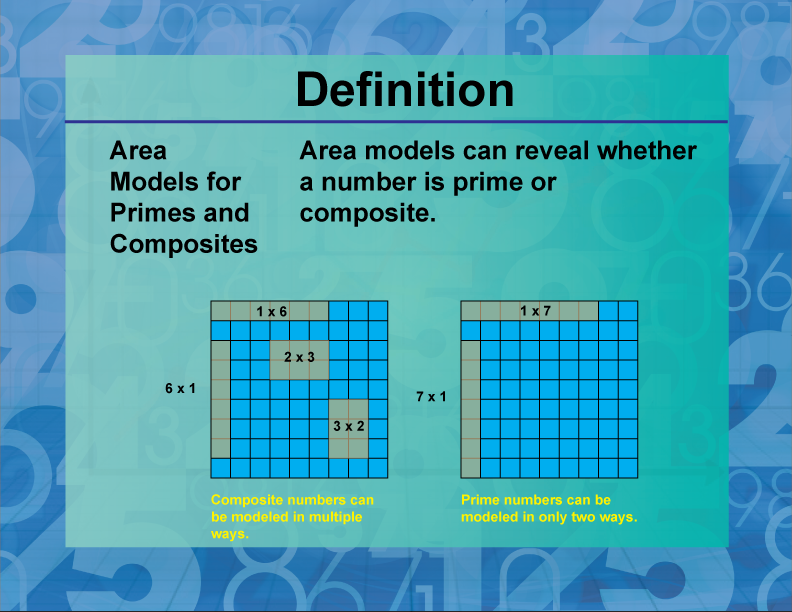
Display Title
Definition--Prime and Composite Properties--Area Models for Primes and Composites
Display Title
Primes and Composites: Area Models

Topic
Prime and Composite Numbers
Definition
Area models are visual representations used to illustrate the difference between prime and composite numbers by showing their factors as rectangular arrays.
Description
Area models play a crucial role in understanding and distinguishing between prime and composite numbers. These visual representations use rectangular arrays to depict the factors of a number, providing a clear and intuitive way to grasp the concept of prime and composite numbers.
In an area model, the length and width of the rectangle represent the factors of a number, while the area represents the number itself. For prime numbers, the only possible area model is a single row of units, as they have no factors other than 1 and themselves. Composite numbers, on the other hand, can be represented by multiple rectangular arrangements, showcasing their various factor pairs.
This visual approach helps students develop a deeper understanding of number properties and factor relationships. It allows them to see that prime numbers have only two factors (1 and the number itself), while composite numbers have more than two factors. Area models also facilitate the exploration of concepts such as factor pairs, multiplication, and division, making them a valuable tool in elementary and middle school mathematics education.
For a complete collection of terms related to primes and composites click on this link: Prime and Composites Collection.
| Common Core Standards | CCSS.MATH.CONTENT.4.OA.B.4 |
|---|---|
| Grade Range | 4 - 6 |
| Curriculum Nodes |
Arithmetic • Numbers and Patterns • Prime and Composite Numbers |
| Copyright Year | 2021 |
| Keywords | composite numbers, prime numbers, factors, definitions, glossary term |